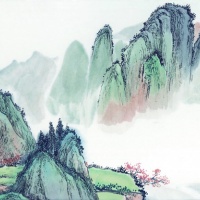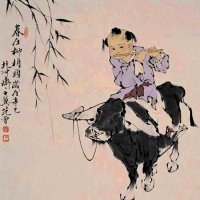- Home Page
- Fact Tours
Our sample tour itineraries of China and China travel packages are sorted by theme and available at competitive prices, you can browse what tours are right for you for your trip to China.
Popular China Tour Packages

Custom Tour Packages to China and Ask Our Experts for Free Enquiry !
- Coach Tours
- Destinations
Beijing, the capital of China. Its art treasures and universities have long made it a center of culture and art in China.
Beijing Top Attractions
Beijing City Tours
Best China Tours with Beijing
Shanghai, the cultural and economic center of East Asia. It renowned for its historical landmarks, the extensive and growing skyline.
Shanghai Top Attractions
Shanghai City Tours
Best China Tours with Shanghai
Xi'an, having held the position under several of the most important dynasties. It is the top destination to explore the facts of Chinese history.
Xi'an Top Attractions
Xi'an City Tours
Best China Tours with Xi'an
Huangshan boasts its culture, beautiful rivers, villages and mountains. It's home to 2 UNESCO World Heritage Sites and the Mecca of photographers.
Huangshan Top Attractions
Huangshan City Tours
Best China Tours with Huangshan
Sichuan is the cradle of the Shu culture, panda, mahjong, teahouse and spicy food. The province ranks first in China by number of UNESCO World Heritage Sites. It is called "the Heaven of Abundance".
Sichuan Top Attractions
Sichuan Tour Packages
Best China Tours with Sichuan
Yunnan, literally means the south of colorful clouds, due to its beautiful landscapes, mild climate and diverse ethnic cultures and traditions, is one of China's major tourist destinations.
Yunnan Top Attractions
Tibet, the nearest land to the sky, is known for its breathtaking landscape, splendid culture, art, buildings, and mysterious religions.
Tibet Top Attractions
Tibet Tour Packages
Best China Tours with Tibet
Explore the lost civilizations by riding a camel! Travel across the Gobi and the desert, and over the high mountains. Our Silk Road tours including different sections of the Silk Road in China.
Silk Road Top Attractions
Silk Road Tour Packages
Best China Tours with Silk Road
Guilin, an internationally-known historical and cultural city, has long been renowned for its unique karst scenery. Its vicinities are the paradise of hiking, caving, rafting, biking and countryside exploring.
Guilin Top Attractions
- China Facts
- China Hotels
- Travel Photos
Arts and Crafts
- Chinese Silk
- Chinese Sculpture & Carving
- Chinese Quyi
- Chinese Shadow Puppet Show
- Chinese Pearls
- Chinese Paper Cut
- Chinese Painting
- Chinese Music
- Chinese Lacquer Ware
- Chinese Wushu or Kung Fu
- Chinese Jade
- Chinese Games
- Chinese Dances
- Chinese Culture
- Chinese Ceramics
- Chinese Calligraphy
- Ancinent Chinese Bronze Vessels
- Chinese Acrobatics
Chinese Painting
Painted animals, fish, deer, and frogs on colored pottery excavated with indication of the Neolithic Period are the primary form of Chinese traditional painting. After thousand of years' development, Chinese traditional painting is highly regarded throughout the world for its theory, expression, and techniques.
 Looking at Chinese paintings for the first time, you are easy to find it very different from western oil paintings which are devoid of brushwork. Chinese painting is the art of brush and ink; the basic tools are almost same with those of calligraphy; which influenced painting in both technique and theory. The brush line, which varies in thickness and tone, is the important feature of a Chinese painting. Shading and color plays only minor symbolic and decorative role. Ink was recognized as being able to provide all the qualities of color.
Looking at Chinese paintings for the first time, you are easy to find it very different from western oil paintings which are devoid of brushwork. Chinese painting is the art of brush and ink; the basic tools are almost same with those of calligraphy; which influenced painting in both technique and theory. The brush line, which varies in thickness and tone, is the important feature of a Chinese painting. Shading and color plays only minor symbolic and decorative role. Ink was recognized as being able to provide all the qualities of color.
According to the means of expression, Chinese painting can be divided into two categories: the Xieyi school and the Gongbi school. The Xieyi school is marked by exaggerated forms and freehand brush work. The Gongbi school is characterized by close attention to detail and fine brush work.
Traditional Chinese painting is a combination in the same picture of the arts of poetry, calligraphy, painting, and seal engraving. In ancient times most artists were poets and calligraphers. Su Dongpo (1037-1101) is an example. To the Chinese, "painting in poetry and poetry in painting" has been one of the criteria for excellent works of art. Inscriptions and seal impressions help to explain the painter's ideas and sentiments and also add decorative beauty to the painting. Ancient artists liked to paint pines, bamboo, and plum blossoms. When inscriptions like "Exemplary conduct and nobility of character" were made, those plants were meant to embody the qualities of people who were upright and were ready to help each other under hard conditions. For Chinese graphic art, poetry, calligraphy, painting, and seal engraving are necessary parts, which supplement and enrich one another.
Although you will see artists in China painting or sketching in front of their subject, traditionally the painter works from memory and is not so much interested in imitating the outward appearance of his subject, but of capturing its life-like qualities, to imbue his painting with the energy tha permeates all nature.
 From the Han Dynasty until the end of the Tang Dynasty, the human figure occupied the dominant position in Chinese paintings, as it did in pre-modern European art. Figure painting flourished against a Confucian background, illustrating moralistic themes. By the 9th century, the interests of artists, stimulated by Taoist attitude and ideas, began to shift from figures to landscapes again. Then the practice of seeking out places of natural beauty and communing with nature become the most important aspect of Chinese painting.
From the Han Dynasty until the end of the Tang Dynasty, the human figure occupied the dominant position in Chinese paintings, as it did in pre-modern European art. Figure painting flourished against a Confucian background, illustrating moralistic themes. By the 9th century, the interests of artists, stimulated by Taoist attitude and ideas, began to shift from figures to landscapes again. Then the practice of seeking out places of natural beauty and communing with nature become the most important aspect of Chinese painting.
The function of the landscape painting was to serve as a substitute for nature, allowing the viewer to wander in imagination within the landscape. The painting is meant to surround the viewer, and there is no 'viewing point' as such as three is in western painting. In the 11th century a new attitude, put to painting by a group of scholar-painter led by Su Dongpo was that painting could go beyond mere representation; it could also serve as a means of expression and communication in much the same way as calligraphy. Painting became accepted as one of the activities of a cultured man. Especial for retired men, they did not paint for income, but for pleasure. They were also collectors and connoisseurs of art, the arbiters of taste. Their ideas on art were voiced in voluminous writings and in inscriptions on paintings.
Moralistic qualities appreciated in a virtuous man (in the Confucian frame of things) became the very qualities appreciated in paintings. One of the most important of these qualities was the 'concealment of brilliance' under an unassuming exterior; and deliberate display of technical skill was considered vulgar. Creativity and individuality were highly valued - but within the framework of tradition. The artist created his own style of painting by transforming the styles of the ancient masters. And the scholar-artist saw himself as part of the great continuity of painting tradition. This art-historical approach to painting became a conscious pursuit in the late Ming and early Qing Dynasties.
Since the turn of the century, China has experienced great political, economic, and cultural changes, and the art of painting is no exception. While traditional Chinese painting still occupies an important place in the life of modern Chinese, many painters now desire to express their experience of new times. By combining new modes of expression with traditional Chinese painting techniques, they are opening up a vast, new world of artistic expression.
Questions & Comments
Home | About Us | Partnerships | Terms & Conditions | Privacy & Security | Payment Guide | Resource Links| Sitemap
Email: contact@chinafacttours.com, Tel: +86-773-3810160, Fax: (+86) 773-3810333
Copyright © 2008-2022 China Fact Tours. All rights reserved
![]()









